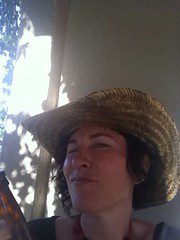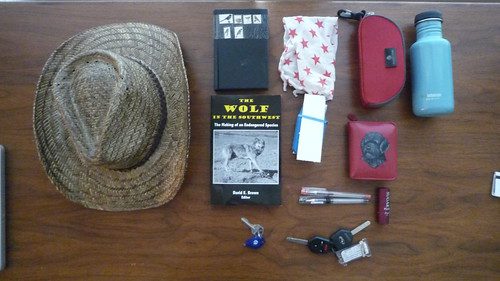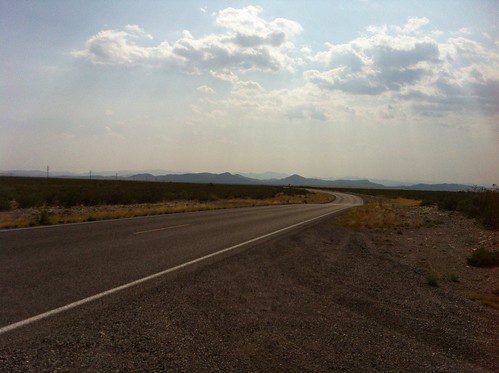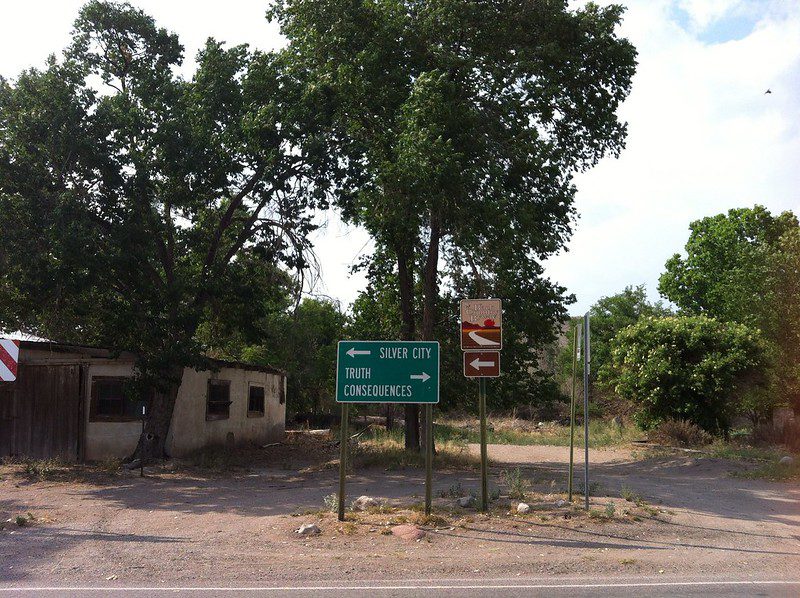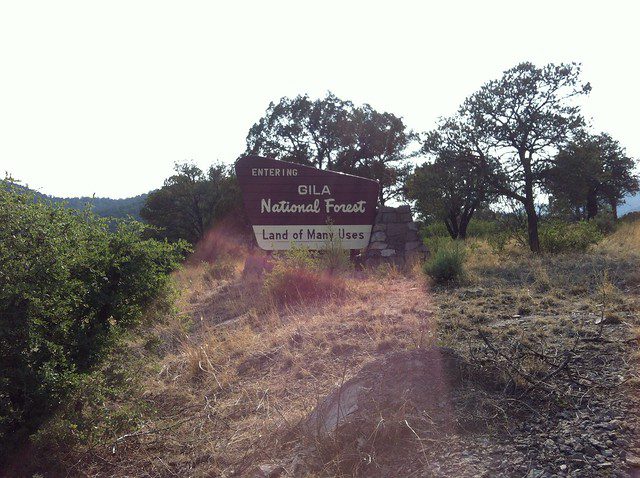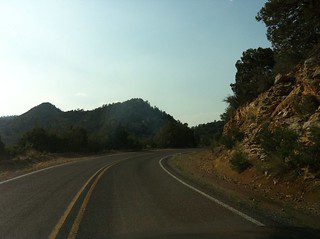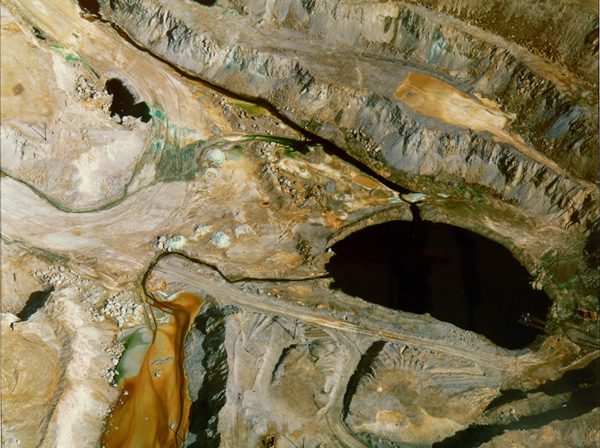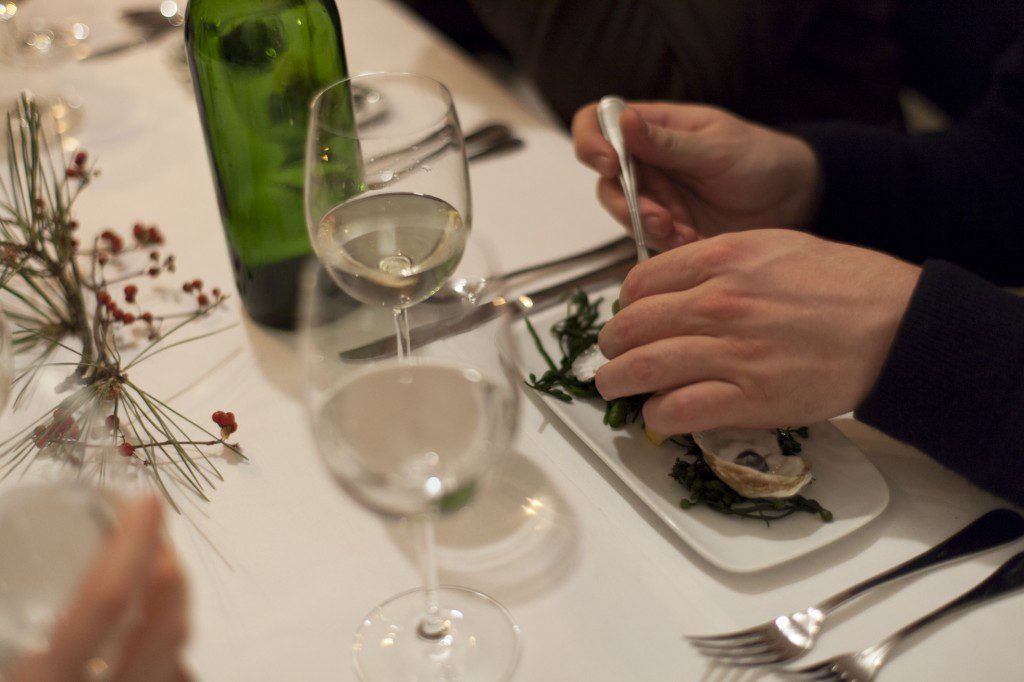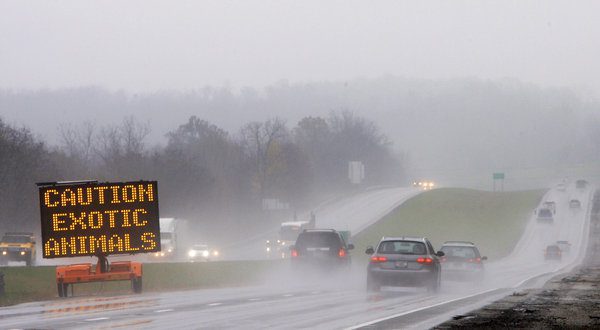Research Journal
-
June 3, 2012
Silver City
Tags:The air smells like campfire.
But it’s not trivial like that.
A truck speeds by and picks the scent up from where it settled, or brings the smoke along from where it came.I met some smoke jumpers in the coffee shop at 7 am.
I also met a man from Kansas in Silver City:
he is apprenticed to a local plant medicine man of great repute for several weeks, learning about herbalism and plant ritual.“I love wolves” he told me. “They remind us to be connected to wilderness and the earth.”
can’t they be of NO service to us whatsoever?
There’s a Saturday farmers market, and I bought some very fresh, clean goat milk panela, russian kale, radishes, garlic scapes, young broccoli, Aracana hen eggs.
Farmers like everywhere. Many beautiful Gaia types.Everybody here is really friendly. Not shit-grin friendly, but genuinely happy to stop and talk. Lots of benches around town, and people swapping stories outside the plenitude of cafes. There’s a breeze but it’s freaking hot, so best move slow. No getting whirled.
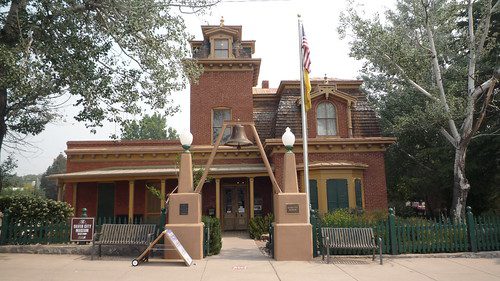
At the Silver City Museum, the super friendly volunteer at the desk asked me where I am from. When I said Brooklyn, he told me he lived in Staten Island in the 1970s. “What did you do there?” “I was in a cult. Children of God. Criminals.” I know a bit too much about them from one of my students.
Bought some supplies at the co-op, another friendly place, with reasonable prices (versus my $5.65 latte this morning) on bulk, elixirs, organics, probiotics, and limes… I’m gonna eat nothing but elixirs and raw vegetables.
Western New Mexico University Museum has a very large collection of Mimbres pottery. It’s in a beautiful cavernous old wooden building on campus, but I was not allowed to take any pictures.The displays are old-school archeology with big run-on sentences in all-caps vinyl letters that explained everything so well. I wonder why the pots selected for display omit the birth scenes, and the luridly huge-phallused pieces and copulations, or any predators (like bear).
There was heat and altitude to collapse from…
nothing like a siesta…I drove to buy some beer and also up Pinos Altos, in the direction of the Gila Cliff Dwellings (which are closed because of the fires). I went about 20 miles north, to the start of the Trail of the mountain Spirits or some such.
I crossed the continental divide,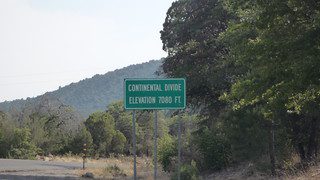
and saw the old Pinos Altos mining town, and then stopped for a micro hike. Turned out to be the Continental Divide trail… I got about 50 yards when I flushed a group of vultures who wheeled low and fast around me, seemingly annoyed. The wind and crickets were symphonic.
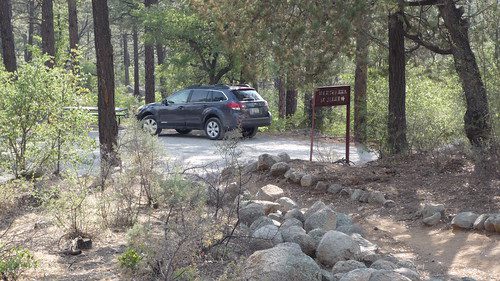

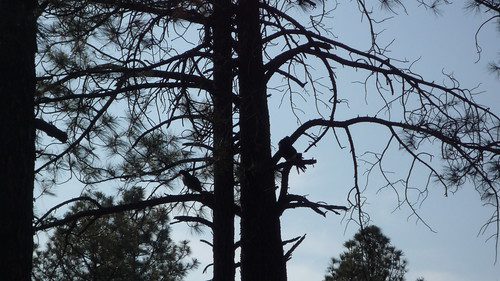
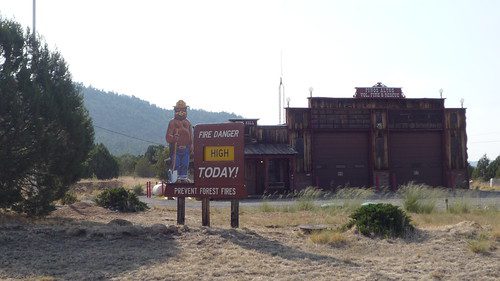
Thanks Walmart. There’s shade and a party in this hat.
Today’s bag was full of:
-
June 3, 2012
Gila Fire
Tags:Record NM blaze will test forest management
By SUSAN MONTOYA BRYAN, Associated Press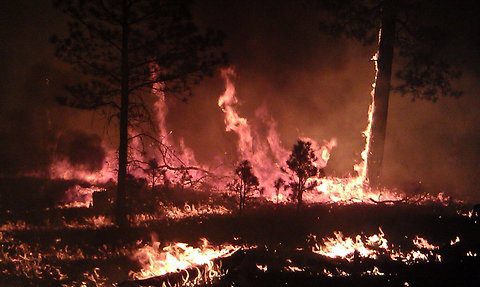
From the air, the smoke stretches as far as the eye can see. On the ground, firefighters talk about the steep canyons that keep them from directly attacking what has become the largest wildfire in New Mexico’s recorded history and the largest currently burning in the country.
Sure, things might look bad. But to land managers and scientists, the record-setting blaze represents a true test of decades of work aimed at returning fire to its natural role on the landscape — a test that comes as many Western states grapple with overgrown forests, worsening drought and a growing prospect for more megafires…
Starting in the early 1970s, the Gila has been leading the way when it comes to implementing such an active fire management strategy. Instead of immediately dousing flames in the wilderness, forest managers have let them burn as long as conditions are favorable.
The question that the Whitewater-Baldy fire is expected to answer is whether that strategy will pay off with more natural, less intense fires.
“There’s a great opportunity here to study a fire like this,” said Matthew Rollins, the wildland fire science coordinator with the U.S. Geological Survey’s National Center in Virginia.
“The opportunity exists to look at how this fire has behaved differently in terms of vegetation mortality, effects on wildlife and fish habitat and water quality,” Rollins said. “We can study how it burned in the wilderness relative to areas with other types of fire management strategies and other types of ignition patterns…”
The U.S. Fish and Wildlife Service is also monitoring two packs of endangered Mexican gray wolves that are situated to the north and east of the fire. Last year, wolves in Arizona were able to escape the massive Wallow fire with their pups, but it’s unclear how mobile the packs in New Mexico are since their pups are much younger.
The fire is about 15 percent contained, which much of that being on the fire’s northern and northwestern flanks.
-
June 2, 2012
Not in Kansas (or NY) any more
Tags:I flew from LGA to Denver.
I found the tornado shelter sign
in the women’s bathroom disarming.
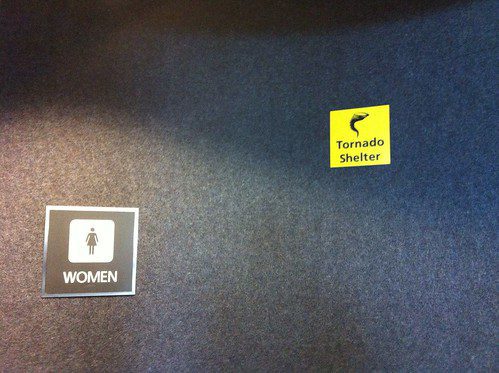
Then flew from Denver to Albuquerque,
and then drove 5 hours south and west.
First scorched earth – 98 degrees
soft hills and naked rock rising like a dead sea,
140 miles to Truth or Consequences(the town was founded by Bob Barker)
where I bought a small saw and a straw hat at Walmart
(which wasn’t there 19 years ago
when I spent my birthday in
a tatty wooden tub containing
a hot spring the Rio Grande).
Then I turned the fancy little Subaru Outback
towards the west, and drove up and up and up
through the JEWELS of alpine desert mountains
(an inland island ecology,
the largest of which are in the Gila,
collectively known as the Sky Island Region)
on curvacious roads at 15 MPHand at a brief apex,
the temperature dropped to 80 degrees
but then I wound back down and down,
until I was in a high valley of grasses and chollo in bloom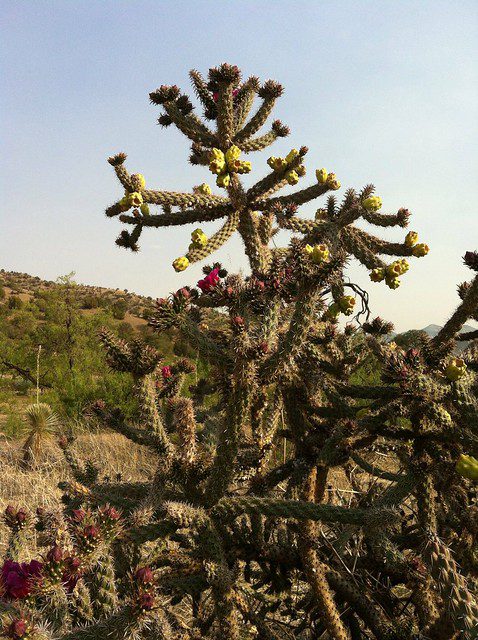
past an enormous open pit copper mine, the Santa Rita
to Silver City, N.M.
“Gateway to the Gila,”
well over 5,000 feet up, in the Chihuahuan desert
2006 NY Times Travel Section: "36 hours in Silver City" Fires sparked by lightning 2 weeks ago in the Gila have left the air in this high valley smokey, evenly hazy and taupe. Over 300 square miles had burned as of this morning. This is healthy, not a tragedy, right? But it’s stressful for all the animals, esp the human ones. 1,200 fire fighters are in there trying to contain or squelch bits of the rampage. A lot of the park roads are closed, as is the Gila Cliff Dwellings Monument. Bummer. In tourist season, this is a blow, especially with the geographically impaired (myself included), for whom it’s easy to surmise that the state is on fire or at least at risk of smoke inhalation. And people have been evacuated from towns. What is happening with the cattle who graze nearby?
I’ll be here for a 2 week residency researching the Mexican gray wolf reintroduction program, supported by ISEA and the New Mexico Wilderness Alliance. Instigated by a gracious talented and expert host: Michael Berman.
I don’t really know how to give some simple context for this project. I reach points where I can, then slip back into the murk of positions, territories, symbolism, and overlapping realities. And I am totally new to this: to facing issues surrounding public land rights, private land rights, shifting land rights, ideas and ideals about wilderness, and the politics and on-the-ground situation of this (or any) wolf reintroduction program.
The players: “enviros,” conservationists (some make a distinction, the former being extremist the latter being ecosystem people), cattle ranchers, government agents, non-profits, and politicians.
-
February 5, 2012
Not an Artichoke, Nor From Jerusalem
Tags: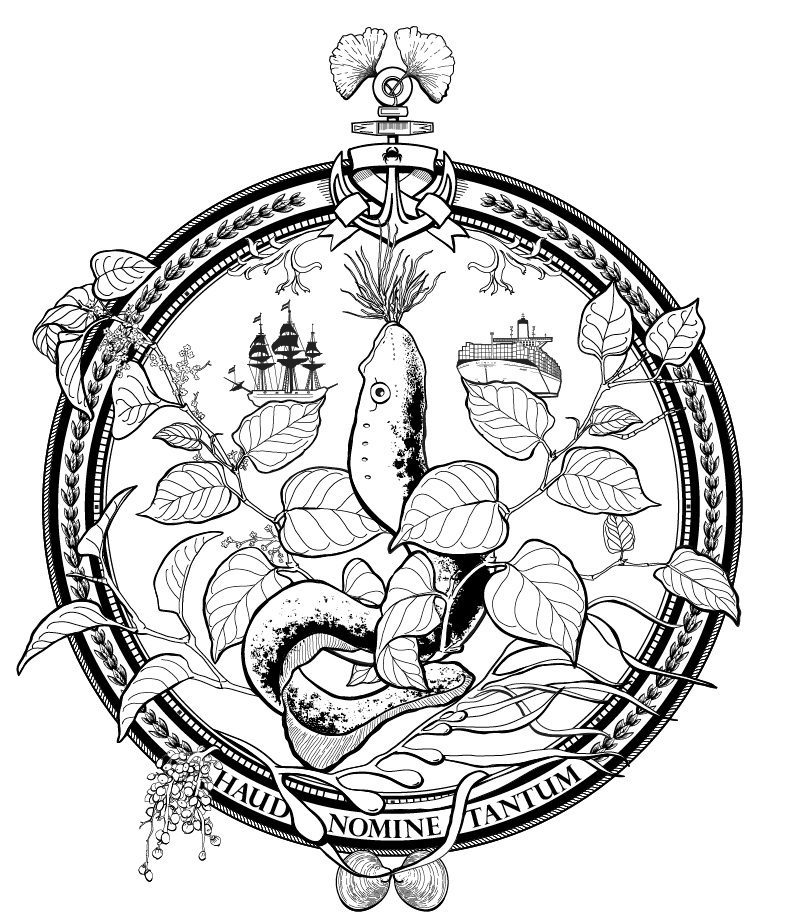
"Haud Nomine Tantum" (Not in Name Alone). A new seal for NYC Edibles. Marina Zurkow (2012) What is local? As a challenge to currently marketed notions of ‘sustainable,” “green” and “locavore,” Michael Connor, Alex Freedman and I conceived of and created a formal “explorer’s club” style dinner for 25 at the Artist’s Institute in New York on Jan 16th 2012. “Not an Artichoke, Nor from Jerusalem” was a dinner that rendered the local exotic, and the exotic all too local.
Click here for documentation, menu, and project description:
http://www.o-matic.com/play/food/AI/
-
January 14, 2012
Local Heroes
Tags:
Foraging in Marine Park in early December I am co-conceiving a dinner that takes a new look at the “local” (info in next post) with Michael Connor and Alex Freedman at The Artist’s Institute (Anthony Huberman/Hunter College space in the LES) on Monday Jan 16. A lot of amazing people were involved –
– Environmental artist Oliver Kellhammer helped us forage at Marine Park, thanks to good tips from Wildman Steve Brill
– Andrew Nundel, a forager in Gloucester MA , whom I met through the Forage Ahead Yahoo Group generously donated his stash of frozen Japanese knotweed
– The chefs Lauryn and Albert from Lucullan Foods are fabulous and exciting to be around, they know so much are are truly adventurers
– and Bun Lai, the owner and genius behind New Haven’s Miya’s Sushi, whom I found through this GOOD article: “When Life Gives You Invasive Species, Make Sushi” that 10 different people sent me. Bun Lai is a gustatory superhero.
Here’s the text he sent Michael today:I just finished foraging. I caught roughly fifty Asian shore crabs, thirty wild oysters and a bunch of wild rock seaweed. I also made you all five bottles of sake from fresh pine needles. Native Americans used to eat the inner cambrium of pine during winter months when scurvy would be a problem because pine contains a lot of vitamin c.
Check out Bun Lai’s blog
-
November 17, 2011
Benjamin the capuchin
Tags:The New York Painter Allen Hirsch — Q&A – NYTimes.com.
The aluminum portrait and larger-than-life photographs on the roof and adjacent to the restaurant La Esquina… are … an homage by the New York City painter Allen Hirsch to Benjamin, his capuchin monkey who died at the age of 14, that is as much a reflection of a broken heart as any light on Broadway. To Mr. Hirsch, who had cut holes in the ceiling of his loft so that Benjamin could run from room to room and had allowed Benjamin to play with his daughter when she was a child, the monkey was not a pet, but “a fellow creature I take care of.”
To others, he was a fugitive. A year and a half ago, The Daily News called Benjamin a “cheek-chomping monkey” after he bit a woman at the inn Mr. Hirsch and his wife operated in upstate New York. When the local authorities demanded that Benjamin be euthanized and tested for rabies, he and Mr. Hirsch disappeared…
Benjamin, who was about 20 inches tall and weighed about seven pounds, died of cancer at a Florida animal sanctuary. Mr. Hirsch, who has created a Web site about Benjamin and the art he has made in the last year while mourning him (benjaminthemonkey.com), talked about the relationship.
Why are you putting up these pieces?
I had such an incredible epic love story with this creature. It spanned 14 years, even though it felt like 50 years, because we spent so much time together. He was dying in a box in a South American town where they kill monkeys, and I nursed him back to health. I became his mother, his father, his partner. Benjamin represented this primordial creature that sort of took me back to my elemental self. We were like two sides of the same creature. He was like the id: I brought out the human in him; he brought out the monkey in me. We had this connection which is hard to describe. I knew what he was feeling.
read more
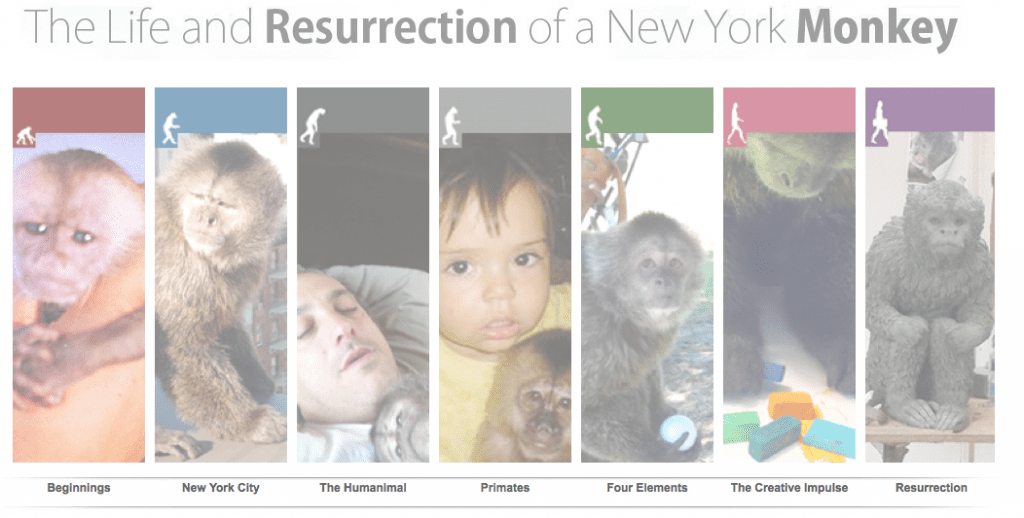
Screen shot of the artist's web site, http://benjaminthemonkey.com/ -
November 9, 2011
A Fracking Method With Fewer Water Woes? – NYTimes.com
Tags:Still awaiting a patent in the U.S., the technique has been used about 1,000 times since 2008, mainly in gas wells in the Canadian provinces of Alberta, British Columbia and New Brunswick and a smaller handful of test wells in states that include Texas, Pennsylvania, Colorado, Oklahoma and New Mexico, said GasFrac Chief Technology Officer Robert Lestz.Like water, propane gel is pumped into deep shale formations a mile or more underground, creating immense pressure that cracks rocks to free trapped natural gas bubbles. Like water, the gel also carries small particles of sand or man-made material—known as proppant—that are forced into cracks to hold them open so the gas can flow out.Unlike water, the gel does a kind of disappearing act underground. It reverts to vapor due to pressure and heat, then returns to the surface—along with the natural gas—for collection, possible reuse and ultimate resale.And also unlike water, propane does not carry back to the surface drilling chemicals, ancient seabed salts and underground radioactivity.“We leave the nasties in the ground, where they belong,” said Lestz.
-
October 29, 2011
nation-building
Tags:Mocking the beaver as a “dentally defective rat,” a Conservative senator proposes that it be replaced by the endangered polar bear as Canada’s national emblem.
-
-
October 19, 2011
The teeming mice of the Farallon Islands
Tags:The final solution, everyone admits, will undoubtedly involve human intervention in a problem caused by humans.
duh.
The Farallon Islands are crawling with nonnative house mice, which could be seen in broad daylight darting and scampering in and out of burrows, on crags amid the cliffs and, as if in mocking defiance, around the 124-year-old Victorian house where scientists study the island ecosystem.
The mice are one of the last remaining introduced species left on the islands – and their population has grown to “plague-like” proportions, according to biologists, who are hatching a scheme to kill off the wily rodents, which devour insects and spiders and attract owls, which also chow on seabird chicks….
The mice population has ballooned over the last century. The 60,000 or so mice – about 500 mice per acre – now make up what is believed to be the highest density of rodents on any island in the world.
The teeming hordes devour the island’s insects, the same food that the endemic Farallon arboreal salamander needs to survive. They also attract owls.
“The burrowing owls show up in the fall when the mice population is at its peak, which is now,” said Gerry McChesney, the manager of the Farallon National Wildlife Refuge for the Fish and Wildlife Service. “They find this smorgasbord of mice, but then the mice population crashes in the winter, right when a lot of breeding seabirds arrive on the island.”
The owls, in turn, begin eating the birds, particularly the Ashy storm petrel, a small gray seabird that breeds and nests in the Farallones, which are home to half of the world’s population of the species. These birds, which are listed as a “species of concern” in California, have yet to recover after losing 40 percent of their population in a 20-year period ending in 1992. Only 10,000 to 15,000 are left in the world.

